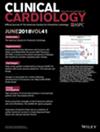Initial Care Pathway in Acute Heart Failure From Home to Hospital
Abstract
Introduction
The prognosis of acute heart failure (AHF) remains poor. Studies focusing on the time-sensitivity of early AHF management have reported controversial results. Thus, our aim is to review current studies focusing on AHF patients using emergency medical services (EMS), their early management, and patient outcomes.
Methods
We searched the recent literature in PubMed and Scopus for studies comparing AHF patients arriving at the hospital by EMS to those self-presenting (non-EMS) at ED (emergency department) from database inception until November 2022.
Results
The literature search found five studies fulfilling our inclusion criteria. The percentage of AHF patients using EMS varied in these studies: 11.5% (100/873) in Finnish FINN-AKVA II, 22.1% (236/1068) in Canadian ASCEND-HF, 35.5% (5129/14454) in a Pakistan Heart Failure-registry study, 52.8% (3224/6106) in Spanish SEMICA, and 61.8% (309/500) in the European EURODEM study. The pre-hospital management differed across the reviewed studies. The use of NIV was rare, ranging from zero to four percent. Vasodilators and diuretics were more commonly used. Although, the differences in the use were obvious (range from 7.1% to 22.0%, and 0.0% to 29.0% accordingly). Three of the studies reported significantly higher 30-day mortality among EMS patients compared to non-EMS patients: ranging from 5.6% versus 3.5%, p < 0.001% to 15.0% versus 6.9%, p < 0.001.
Conclusion
The use of EMS, as well as pre-hospital management, varies between the international cohorts and registries. The pre-hospital AHF management is generally limited. Moreover, EMS patients tend to have worse outcomes compared to non-EMS patients.


 求助内容:
求助内容: 应助结果提醒方式:
应助结果提醒方式:


